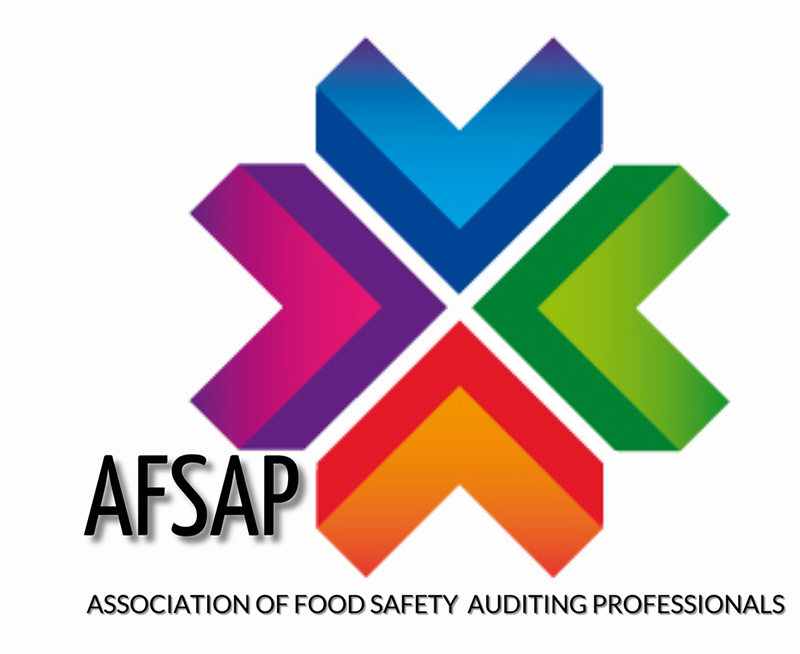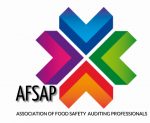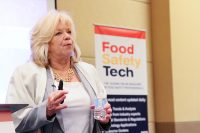Technology and automation for safety and surveillance have already impacted nearly every industry in the world. For example, in the United States and many other developed regions, we have just lived through the transformation to electronic health records within the healthcare industry. Prior to that, we lived through the digital transformation of all of our banking information to an online banking platform—now the norm across the world.
However, the food and beverage industry is still learning how technology can improve their organizations. The food safety segment of this market is particularly in need of a digital transformation, as the risk associated with foodborne illness is potentially catastrophic to food companies, and moreso, to the end consumers who are impacted by preventable pathogenic outbreaks.
Along with regulation advancements, such as the timed roll-out of FSMA, the industry continues to work towards a more effective approach to food safety. But most regulations, and advancements in the industry are pointed toward a reactive stance to food safety issues, rather than a preventive stance. For example, although traceability is important in leading investigations to the source and taking remediation steps sooner, a more proactive approach to prevention should be considered when investing in food safety programs.
This is where the importance of an automated environmental monitoring program comes in. To be proactive requires a commitment to embracing data and digital technology. Knowing where to start to effectively pivot your digital approach can be a challenge.
Understanding the following thought process can help you to recognize areas of potential improvement and growth within your environmental monitoring program.
- Define Your Business Objectives. Ask how profitability and production uptime is connected to food safety issues.
- Verify Suppliers. Establish protocols for incoming product from external suppliers and validate their food safety performance and ability to maintain a clean facility.
- Modernize Your Environmental Monitoring Program (EMP). Are you able to confirm that your EMP is being executed consistently? Across all facilities?
- Understand Data Exhaust. See how your organization’s valuable data can be used to identify trends and accelerate root cause analysis that impact decision-making processes.
Define Your Business Objectives
Food companies large and small are being challenged to implement required processes and procedures to meet the demands of FSMA, and ultimately achieve a more proactive and preventative food safety stance. Transformation in this arena, led by government regulation, and enhanced by standards certification requirements, has highlighted the responsibility of suppliers and manufacturers to protect consumers.
Many organizations are not aware that a single failure in their food safety program could actually be the most devastating profitability risk that the organization faces today. When your organization is focused on production uptime and profitability, it can be easy to overlook the details involved in maintaining a strong food safety program. In reality, though, food safety and profitability are inextricably linked due to the risk of production interruptions that can be caused by safety issues.
Whenever a food recall occurs, it has the potential to start the dominoes falling, with major implications regarding costs, reputational damage, compliance penalties, supply chain interruption, and sales declines. Worse yet, these impacts can last for years after the actual event. By delaying both the importance of recognizing the seriousness of this risk as well as taking necessary steps to prevent it, your organization’s reputation could be on the line.
Unfortunately, planning is often sacrificed when managers fail to implement the proper technological solutions. Fulfilling fundamental documentation requirements involves a smart, automated approach. This is the best way to optimize recall prevention. By incorporating an automated EMP process, a supplier management system, and other FSMA Preventive Controls measures, suppliers ultimately improve the strength of the entire chain for their partners, consumers and themselves.
There are many other facets to food safety, but the EMP is where inspectors and auditors will look to see the indicators of contamination and the efficacy of your sanitation controls. Therefore, it is critical that your organization exhibit not only that you are on top of things and are following your EMP procedures consistently, but that you can analyze and pinpoint issues as they arise, and that you have a track record of corrective actions in response to those issues. This, in-turn, allows you to see where your business objectives are most at-risk.
Regardless of which specific food industry segment your company operates in, or which governing body it reports to, it’s essential to stay informed and compliant with changing regulations in order to reduce the risk of experiencing a recall. In a strategic operational role, intelligent environmental monitoring allows companies to not only proactively work to avoid public health issues, but is vital to retaining a consistent bottom line.
Verify Suppliers
Earlier this year, the FDA heralded what they call a “New Era of Smarter Food Safety”. As technology becomes increasingly accessible, more and more companies are investigating how technology can be used to harness and control the growing complexity of supply chain implications.
The challenge of making sure your organization is doing its due diligence to prevent recalls is further complicated when incorporating outside suppliers. For example, 15% of the United State’s overall food supply is imported from more than 200 other countries, according to the FDA. Making sure the product coming into a facility is also meeting your standards is vital to preventing pathogens from entering your supply chain either through containers, people, or the incoming product itself.
The complexity grows exponentially when we contemplate what this means for tracking food safety across a supply chain of this scope. Generally suppliers are asked to provide verification for the cleanliness of the product they are bringing into your facility. However, by going a step further and establishing test points for the product when it comes in, you will be better equipped to catch pathogens before they can enter into your own supply chain and potentially contaminate other products. While you may already have a good relationship with your suppliers, being able to independently verify the safety of their products and that their own processes are working, creates a mutually beneficial relationship.
Modernize Your Environmental Monitoring Program
Food experts at the World Health Organization headquarters in Geneva discussed the critical nature of ensuring food safety across geographic boundaries, as it is an issue that affects everyone. Incidents of pathogen outbreaks around the world have a direct impact on the health of global citizens, with one in 10 people falling ill due to food contamination.
A traditional EMP allows organizations to continuously verify that their sanitation programs are working by scheduling testing, monitoring results for any signs of pathogens, and maintaining compliance with regulatory bodies. Historically, this type of program is documented in spreadsheets and three-ring binders, but today the acceptance of new tools being offered by vendors and labs are expanding offerings to modernize the monitoring process.
Food safety professionals, many of whom are trained microbiologists, should have better tools at their disposal than spreadsheets that force them to manually sift through data. All regulatory bodies in the food industry have guidelines when it comes to where, what, and when you should be testing in your facilities. Ensuring that this is happening is a basic requirement for meeting regulatory mandates.
By choosing an automated EMP, FSQA teams are able to schedule testing plans including randomization and test point coverage rules, see what testing is being performed when, and obtain all testing data in one system for ease of access before or during an audit. This offers an “always-on” source of audit data and more importantly, trending and root-cause analysis capabilities to find and define actions to remediate recurring problems.
Further, an automated EMP that is integrated with your food safety plan allows you to set up workflows and automatically notify appropriate team members according to your organization’s policies. Each remediation step can be recorded and time stamped as the corrective action moves towards completion.
Understand Data Exhaust
A dominant theme pushed forward by FSMA is the need to document all aspects of your food safety plan, from the written outline to the records indicating proper implementation. Today’s manufacturers face a time of heightened regulation, and with stricter enforcement comes greater requirements for documentation. Automated EMPs not only provide your organization insight into what is happening within your facilities for documentation, it also gives time back to your FSQA team who, instead of spending their days with three ring binders, can analyze and investigate recurring issues in your facility to look for new, innovative ways for the organization to maintain a high standard of quality.
However, effective testing also means reading, understanding and responding to results. It is not enough to simply meet the required volume and frequency of environmental testing metrics. You need to use the resulting information to effect change and improvements by lowering the likeliness of pathogens, allergens and contaminants from entering the food supply chain. The more data collected, the more it leads to true understandings. What testing might show is just the symptoms of the problem—not the root cause of a far bigger problem. As more data is available, it becomes more valuable through the insights that can be gained through trend analysis. This, in turn, moves the conversation to higher levels within the organization who care about ensuring productivity and reducing avoidable risk.
Incorporating your lab into the equation is essential. Find a lab partner that offers an automated testing program that is integrated with their LIMS. Your organization will then be in a better position to ensure results are being responded to in an appropriate time frame.
There are many diagnostic tools in use today, both in-plant and at the lab. Each of these tools generates “data exhaust” in the form of a diagnostic result. But are your data streams being integrated and analyzed to find correlations and potential cause/effect relationships? Or does your ATP device simply record its data to a dedicated laptop or spreadsheet?
Testing, combined with an automated EMP, can allow you to combine data from various diagnostic systems (on-premise or from your lab partner) to identify trends and therefore a more holistic path to remediation. For this to occur, data must be accessible, aggregated and actionable, which an automated EMP achieves.
Forward-thinking companies and facility managers are leveraging valuable software solutions to improve processes, protect reputations, minimize inefficiencies, and simplify multifaceted compliance and audit tasks. Over the next three to five years, numerous organizations will reduce their risk of food recalls by combining their EMPs with analytics capabilities to reduce food risk and improve quality using diagnostic solutions and data assets. This change will be arduous, as all digital transformations in other industries have shown. But, in the end, they have shown the value and long-term success that the food industry now needs to experience.



















